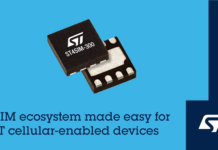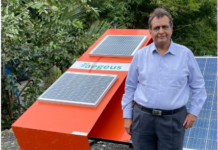Worldwide IoT industry is estimated at $300 billion and the number of connected devices at 27 billion by 2020. The possibilities are immense in India as the country is likely to account for over 5% of the global pie.
What exactly is IoT?
Internet of Things or, more accurately the internet of devices, is all about connecting devices over the internet and letting them ‘talk’ to us, applications and each other. This allows huge amounts of data to be collected and transferred, which can then be used for multiple practical purposes. However, Internet of Things doesn’t necessarily have to be connected to the internet, it can also be a network of things.
A common example are wristwatches with sensors that can track the wearers’ heartbeat and pass on the information to our smartphones via bluetooth. The smartphone can store that data on cloud after which it can be accessed at any point of time to view a report card of how your heart has been behaving for over a period of a week or a month.
Are there different kinds of IoT?
“While IoT can be a multiple-layer system, it can roughly be broken down into three levels. The first is a rudimentary form, where cameras are used to monitor places or people. This application can be seen in schools, universities, malls,” says Akhilesh Tuteja, partner and head of IT advisory, KPMG. Further down, it goes into things which you can control without having additional integrated systems — drones, sensors for recording temperature, a counter in an assembly line. These are used in manufacturing plants.
Then comes the integrated systems. These have a larger impact, for example, internet-controlled plants or sensors and actuators that are used in large-scale plants with complex systems.

So what’s happening globally?
With advancements in technology, IoT is growing at a rapid pace. According to IDC, the worldwide IoT market will grow from $655.8 billion in 2014 to $1.7 trillion in 2020.
A common example of IoT is driverless cars. One of Google’s self-driving cars recently met with an accident, which shows that there’s a long way to go to make them perfect. However, the same cars have covered over 100 miles under test conditions. How do they do that? “The car has multiple devices which track the movement of objects, captures the images surrounding it and processes the information. It has devices on board that can change the speed and direction of movement depending on the feedback it gets from the external environment,” says Sudipta Ghosh, partner, technology, PwC. The data is then backed-up on a cloud from which it can receive instructions and behave accordingly, right from throttle accelerator to applying brakes.
What about India?
The Department of Electronics & Information Technology (DeitY), in its draft policy, targets to create an IoT industry in India of $15 billion by 2020.
According to Ghosh, within India, there’s been some movement in the healthcare segment. “Leading hospitals are discussing how to move to preventative therapy from curative therapy by collecting more data about the condition of the patient. This is clearly a sector where the needle has moved.”
The other two sectors where there has been quite a lot of movement are in big production zones — oil rigs, generators and industrial plants — and in the telecommunications world. Both have a lot of embedded devices that are collecting the data on temperature, signal strength, pressure, pH, voltage — all the technical parameters. IoT is being used to detect and predict breakdowns. This is immensely beneficial, especially for corporates, particularly those who have interests in fixed assets/machines.
The usage is more in the corporate sector as that’s where the immediate benefit would be accrued from a cost saving or improvement/efficiency perspective.
As per a report by Gartner the total revenue generated from IoT industry worldwide would be $300 billion and the number of connected devices would be 27 billion by 2020. India is assumed to account for 5-6 per cent of the global pie.
What about consumers?
So far, most of the focus has been on smartphones. A common example is surveillance — you can keep a camera at home to see what your baby is doing or if your pets are okay. Now, says Tuteja, there’s a range of smart devices that are coming up such as internet-enabled printers, which allow you to print anything even while you’re not near the printer, smart-lighting and even weather-control with which you can switch on an air-conditioner 10 minutes before reaching home.
“There’s a lot of scope in the future, such as repair work for electronics with no moving parts like television sets. Since it is a completely electronic device, there is no need for a repair guy to come over. You can simply connect it to the internet and let it be repaired over the cloud,” he adds.


















